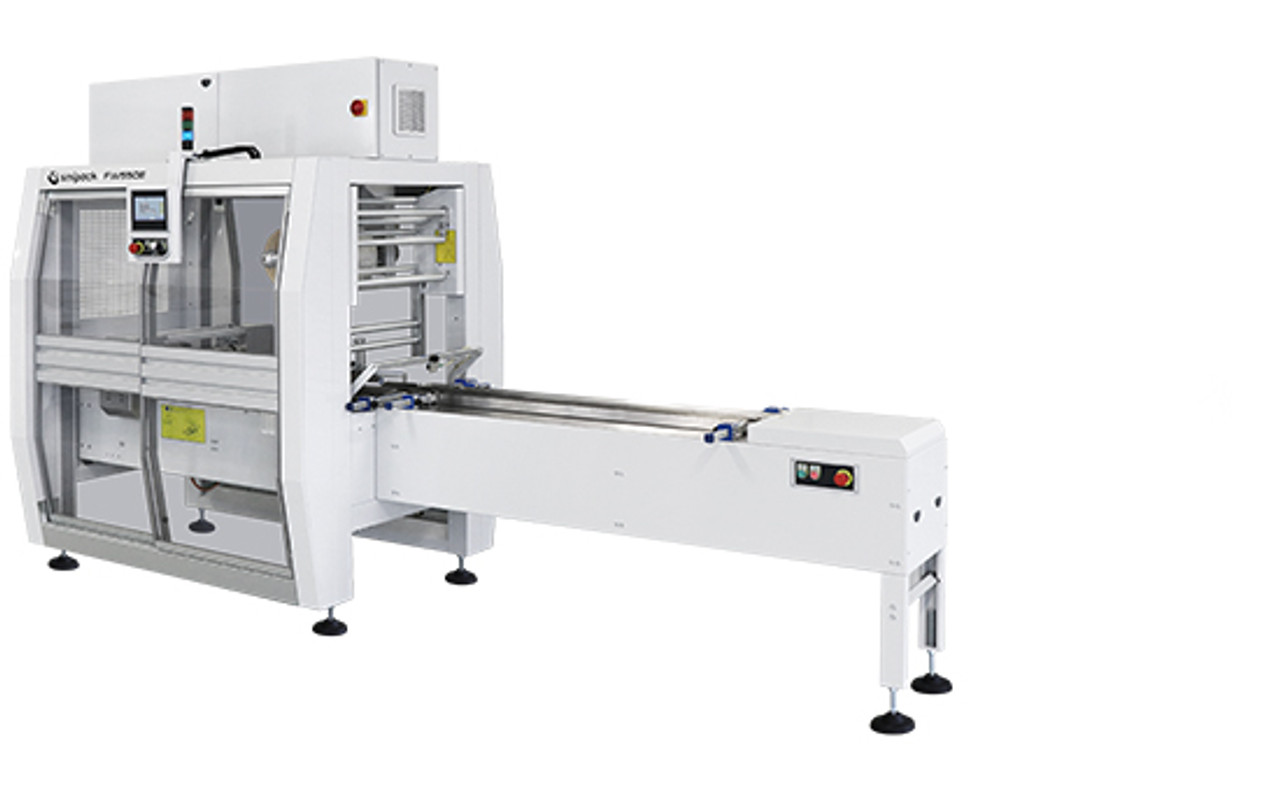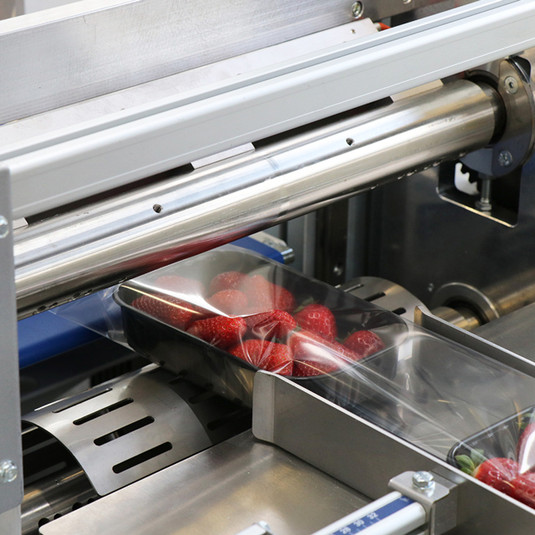Posted by Mike Cunningham on Jan 15th 2025
High Speed Flow Wrapping Solutions
Packaging plays a vital role in today’s fast-paced business landscape, ensuring product protection, preservation, and presentation.
What is flow wrapping, and what types of films are available in the market for this packaging method?
Flow wrapping is a packaging process where a product, or a specific number of products, is wrapped in a continuous film, sealed on both ends, and then cut to the appropriate length. This method is highly efficient for a wide range of applications, offering a tight and protective barrier. It is particularly advantageous for fresh produce, as it preserves freshness and extends shelf life – think of the three-count packs of peppers you might find at your local grocery store. However, flow wrapping applications go far beyond just produce.
With sustainability becoming increasingly important, a variety of flow wrapping films have emerged. These include polypropylene (PP), biaxially oriented polypropylene (BOPP), polyethylene (PE), compostable films, and films with different permeability, as well as paper. These films can be clear, printed, or laminated, providing great flexibility in branding and product presentation. The choice of film depends entirely on the application; for example, the film used to flow wrap tomatoes will be entirely different from the film used for plastic cups.
The continuous nature of this process allows for high-speed operation, making it ideal for large-scale production environments. For produce like peppers, apples, and tomatoes, flow wrapping offers consistent protection and extended freshness, which helps reduce waste. In industrial applications, such as packaging cleaning supplies, plastic cups, or garbage bags, the process ensures uniformity and repeatability, which are crucial for maintaining product quality. Flow wrapping is extremely versatile and can be used for a wide range of applications. It is commonly used for packaging bakery products, buns, and frozen foods like hamburger patties. The advantages of flow wrapping include not only its efficiency and material savings but also its ability to enhance retail shelf appeal. The tight, clear wrapping allows customers to see the product clearly. Additionally, the ability to use printed films allows for branding directly on the packaging, making the product stand out on the shelf.
There are many equipment manufacturers across North America, Europe, and other parts of the world, offering a wide range of options. While most equipment will get the job done, not all machines are created equal. It is important to understand some basics before making your equipment purchasing decision.

Consider your application – does your specific application require specialized feeding systems? Are you planning to pack just one type of product, or do you need the flexibility to run multiple different applications? Do you need to run your products with or without a tray? Is the equipment compatible with your required packaging materials? What are your production capacity and speed requirements? Is the equipment dependable, and does it have a proven history in the market? What are the maintenance requirements? What is the investment needed to purchase the equipment, and are there any other cost considerations?
There is a lot to consider, so it is beneficial to work with a packaging equipment partner who can guide you through this decision, ensuring that the choice you make is the best for your products and your business. For more information call us at 813 242 6995 or reach sales@quickpakinc.com

